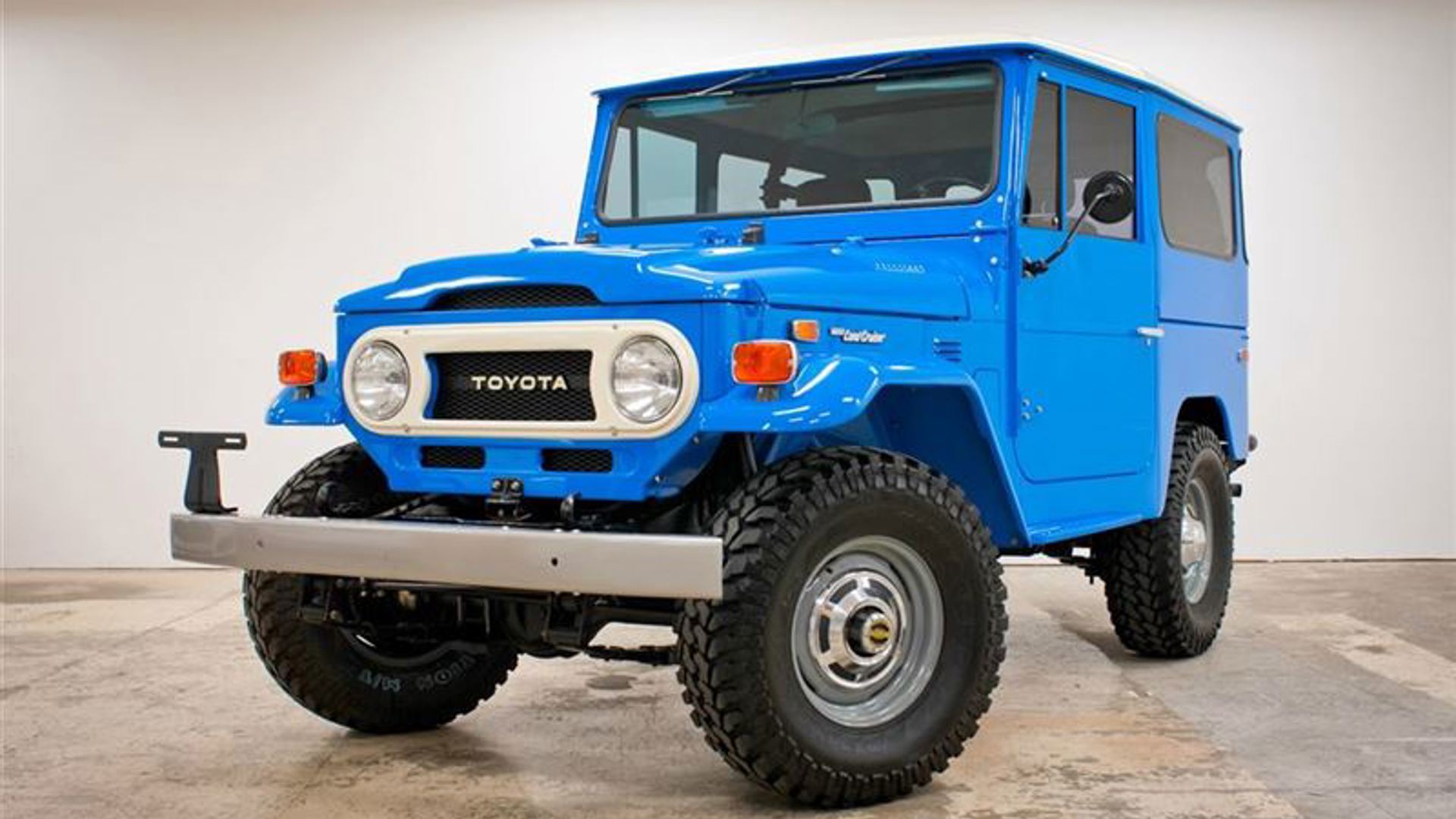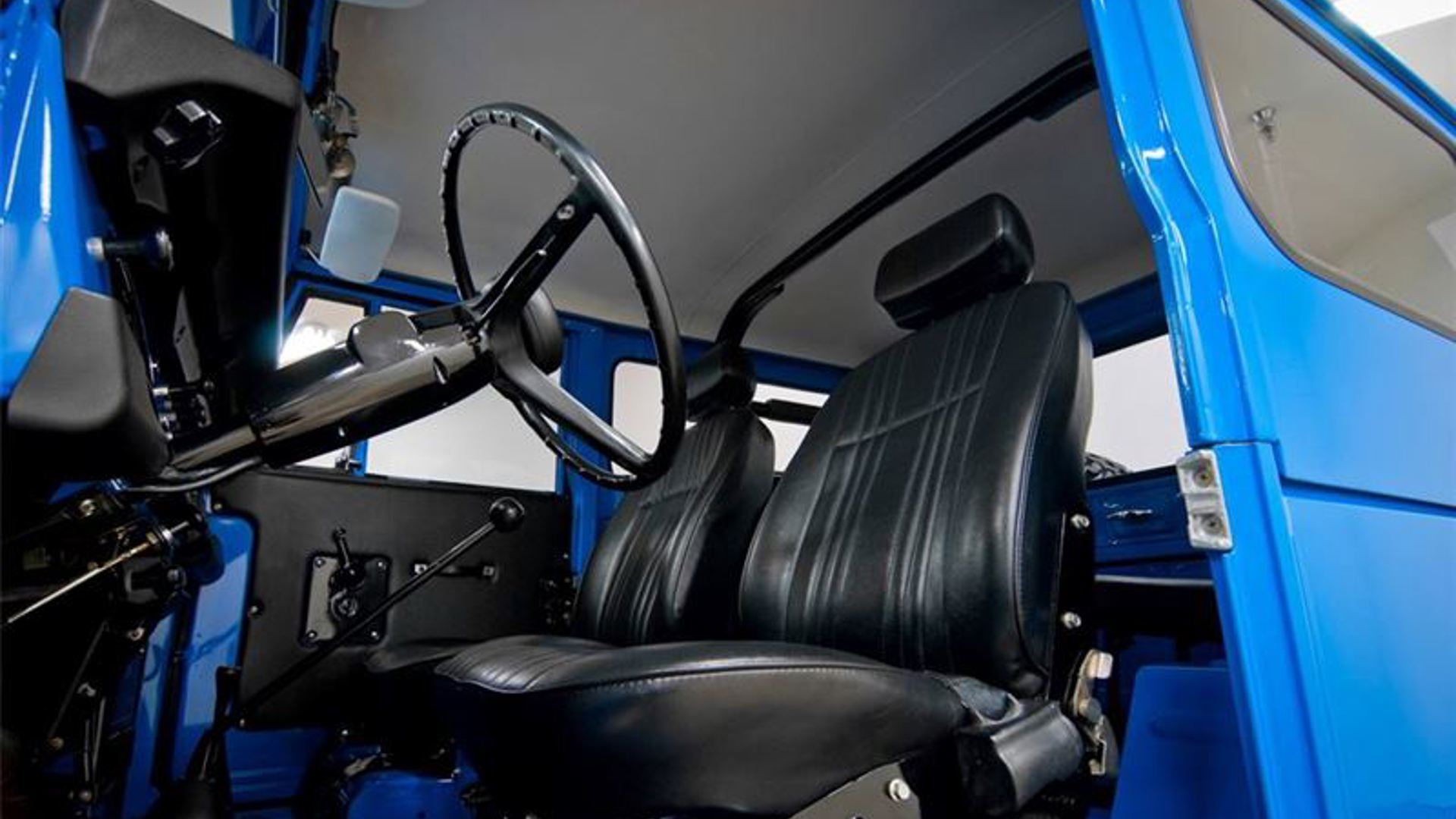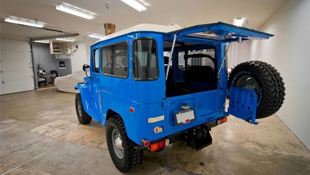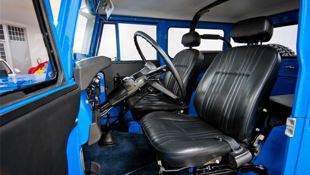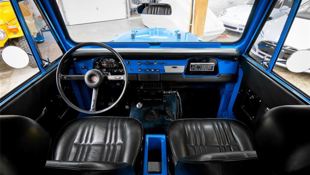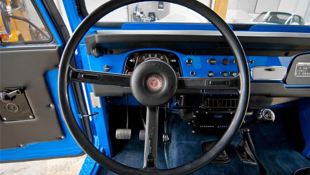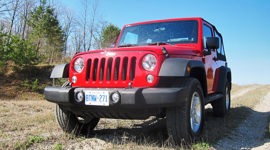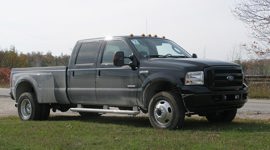It's a classic off-roader that's a bit of an alternative to the usual classic off-roaders. It's a very bright blue and this 1974 Toyota FJ40 Land Cruiser is our autoTRADER.ca Find of the Week.
When it comes to off-roading, the North American standard has been the Jeep for as long as most people can remember. Short wheelbase, loads of suspension travel, and four-wheel drive. When it comes to England, and most of her territories, the four-by-four of choice is the Land Rover. In Series I, II, III or later Defender guise, the Land Rover has been...roving the land throughout the Commonwealth since the 1940s.
In the rest of the world, though, there is a different off-roader of choice. A Toyota. The Land Cruiser that has been going anywhere and doing almost everything since 1952 when it drove further up Mt Fuji than any other land vehicle had been before.
The original Toyota BJ was designed to be a military vehicle, like the Jeep and Land Rover. It got the Land Cruiser name in 1954 when, as Toyota Technical Director Hanji Umehara put it, "I had to come up with a name for our car that would not sound less dignified than those of our competitors," meaning Land Rover.
The second-generation Land Cruiser, the J20, arrived in 1955. It had a bit more style, a bit more power, and a bit more of a focus on civilian customers.
Then, in 1960, the classic arrived. The 40 Series Land Cruiser. The FJ40 name comes from the F-series engine, the Toyota designator J, which does stand for Jeep, and the 40 series chassis code.
The FJ40 changed little of the bodywork of the 20 series that preceded it but changed much under the skin. The Land Cruiser was redesigned to make it more suited to mass production. Large-scale press machines were added to the factory, the body panels went together differently, and the processes to put it together were new.
A low-range transfer case was added for the first time. This gave the FJ40 real rock crawling and mud-slinging ability off-road. The transfer case lever and the shifter for the three-speed manual were also moved so that three passengers could sit in the front seat.
This was the iconic off-roader that would conquer some of the most remote places in the world. If the only roads are cart tracks, you'll probably find an FJ. Official production lasted from 1960 until 1984. Badged the Bandeirante, production in Brazil lasted until 2001.
Toyota sold more than one million FJ40s, but that doesn't make it easy to find a nice one today. These were work trucks. In the forests, deserts, farms, and mountains all over the world. Not conditions that lead to looking good up to sixty years later.
Enter our Find of the Week. It's a 1974 FJ that the seller says spent its life as a farm truck. Spending life on the farm, it didn't see public road use until just a few years ago. Life as a farm truck isn't easy, so this FJ got a full frame off restoration.
It has been completely stripped down to a bare shell. Then it was repaired, painted, and reassembled using all new hardware. It shows just 16,200 miles on the odometer and looks immaculate.
It's a 1974 model, which means it has the 3.8L version of Toyota's inline-six. That engine makes 125 hp and 209 lb-ft of torque. The transmission is a four-speed manual, and the later model means it's a conventional floor-shift and not the column shift three-speed of older vehicles.
If you're looking for an historic off-road vehicle, it's hard to do much better than an FJ40. And it's hard to find an FJ40 that looks nicer than this one, for sale in Vancouver BC.
